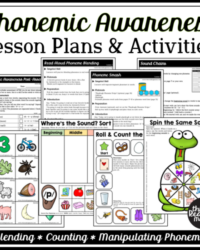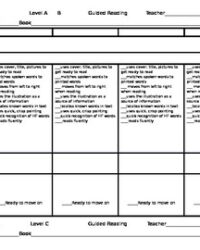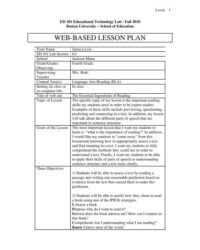Understanding the building blocks of language is a crucial step in a child’s literacy journey, and at the heart of this understanding lies phonological awareness. It’s the ability to recognize and manipulate the spoken parts of words, like syllables, rhymes, and individual sounds (phonemes). For educators, teaching these fundamental skills can sometimes feel like navigating a complex maze. There’s a lot to cover, and ensuring a systematic, engaging approach is key to setting young learners up for reading success.
That’s where a well-structured phonological awareness lesson plan template comes into play. It provides a clear roadmap, helping teachers organize their lessons, track progress, and ensure no vital skill is overlooked. Having a ready-to-use framework not only saves precious planning time but also boosts confidence, allowing educators to focus on the dynamic interaction with their students rather than getting bogged down in administrative details.
Crafting an Effective Phonological Awareness Lesson Plan
Designing a phonological awareness lesson plan requires a thoughtful approach, combining clear objectives with engaging, developmentally appropriate activities. Every successful lesson starts with a specific learning goal, whether it’s identifying rhyming words or segmenting a word into individual sounds. Beyond the objective, you’ll need to consider the materials that will bring your lesson to life, the sequence of activities that build understanding, and how you’ll assess student comprehension.
The progression of phonological awareness skills is hierarchical, meaning some skills must be mastered before others. Beginning with broader concepts like word awareness and rhyming, lessons gradually move towards more refined abilities such as syllable segmentation and, ultimately, the trickiest skill of all: phonemic awareness, which involves manipulating individual sounds. A robust lesson plan template helps you naturally guide students through this progression, ensuring a solid foundation at each stage.
Engaging young learners is paramount. Lessons should be interactive, incorporate movement, and use a variety of sensory experiences. Think about incorporating songs, games, and hands-on activities that make learning phonological skills fun and memorable. Furthermore, a good template will prompt you to consider differentiation, allowing you to tailor activities for students who might need extra support or those who are ready for more advanced challenges, ensuring every child can succeed.
For example, a lesson focusing on rhyming could involve a “rhyme match” game where students pair picture cards, or a “rhyme time” song where they fill in the missing rhyming word. For syllable awareness, clapping out the syllables in names or objects is always a hit. The key is to make these abstract concepts tangible and accessible for young minds, bridging the gap between spoken language and the sounds that form words.
Key Stages in Phonological Awareness Development
- Rhyme and Alliteration
- Word and Syllable Segmentation
- Onset-Rime Blending
- Phoneme Isolation and Blending
- Phoneme Manipulation
Essential Elements for Your Template
- Learning Objective
- Materials Needed
- Introduction/Warm-up
- Guided Practice Activities
- Independent Practice
- Assessment Strategy
- Differentiation Notes
Putting Your Phonological Awareness Lesson Plan Template to Work
Once you have a comprehensive phonological awareness lesson plan template, its true value comes from its consistent application. Using a template provides a sense of structure and predictability, not just for you, but also for your students. They begin to understand the flow of the lessons, which can reduce anxiety and increase their readiness to learn. It also ensures that all critical components of phonological awareness are addressed systematically, leaving no gaps in their foundational literacy skills.
Remember that a template is a living document, not a rigid rulebook. It should be adapted and personalized to fit the unique needs of your students and your teaching style. Perhaps one group of students grasps rhyming quickly and needs more time on phoneme blending, while another thrives with more visual aids. The template provides the backbone, but your expertise and knowledge of your students are what breathe life into each lesson. Feel free to add notes, tweak activities, and incorporate new ideas as you discover what works best.
The process of using a template is iterative. After delivering a lesson, take a moment to reflect. What went well? What could be improved? Did all students meet the objective? Use these reflections to refine your phonological awareness lesson plan template for future use, making it an even more powerful tool in your teaching arsenal. This continuous improvement ensures that your lessons remain effective and responsive to the evolving needs of your learners.
- Pre-Assessment
- Lesson Delivery
- Post-Assessment and Reflection
Ultimately, a well-designed phonological awareness lesson plan template is more than just a planning tool; it’s a foundation for success. It empowers educators to deliver targeted, engaging, and effective instruction, making the complex world of sounds approachable for young learners. By providing a clear structure for each lesson, it helps build strong literacy foundations, setting children on a confident path toward reading and writing proficiency.
Embracing a systematic approach to teaching phonological awareness ensures that every child receives the essential skills needed to decode words and comprehend text. It transforms abstract linguistic concepts into concrete, manageable steps, fostering a love for language and learning that will serve them well throughout their academic journey and beyond. It’s about equipping educators with the resources to make a real difference in early literacy development.


